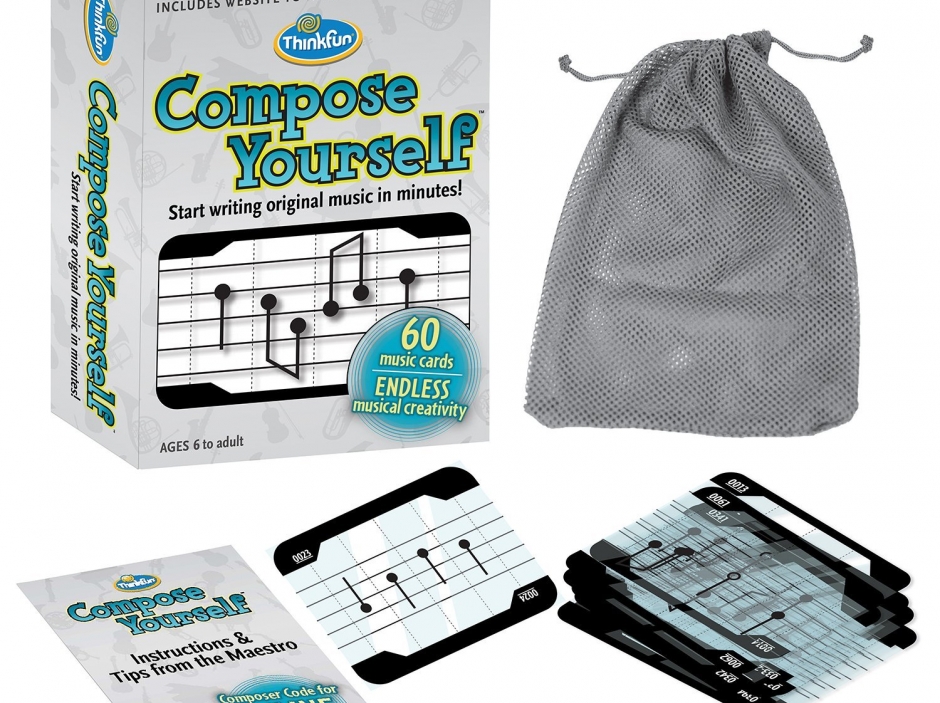Back in the late 1700's, Mozart is said to have created a game that enabled non-musicians to "create" music. The maestro created snippets of music that could be assembled in any order. Players would "compose" by throwing dice, which determined the selection and order of the snippets.
Compose Yourself is a semi-high-tech variant on Mozart's game with music composed by British composer Philip Sheppard. Snippets of sheet music are on transparent tiles, each a single measure of music notated in 4/4. They can be arranged like musical dominoes into any order, and can even be flipped upside down (or over to play the notes one way and then the other)! Unlike back in Mozart's day, players need not be able to read music to hear their compositions: They can to the music on the internet by entering he numbers on the cards onto a special page on the ThinkFun.com website.
The webpage then plays the notes back using a marimba, an orchestral arrangement , or both. Oddly, in this age of smartphones, this is not an app, but a website, and that is one of the game's biggest flaws. While it works well on a computer, it did not display properly on my cell.
It is interesting to see how the notes on the card affect what is played, how they command different melodies depending on the orientation of the card. Cards can be repeated, played forward, backward and even inverted thanks to the clever use of transparent cards. And, because the game allows users to put together the cards like dominoes, there is more creativity than afforded in Mozart's version which relied on random dice for inspiration.
On the other hand, there are no explanations about what is happening. There isn't even a cursory explanation that each card has four beats, and represents a measure of music. The length of each note is not discussed, and neither is the staff. Some will say that this is a way of learning the way music is notated by discovery; but I think the game would have been richer with some contextual information. Since the individual notes don't animate on playback, if you can't read music, and don't know anything about notation, you miss a lot of what is going on.
Another drawback is that since any card can be put in any order (even upside down) the are no "wrong notes", no dissonance, no change of meter, and the pieces tend to get a bit dull. Still, there is exploratory value here.
The set will be the most fun for kids already learning an instrument. Once the "composition" is finished, it can be saved as an mp3 and the sheet music can also be printed. Kids can "compose" a concerto, generate an mp3 of the orchestra, and then play along on their own instrument!



